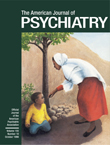Obviously, psychoanalysis should be able to tell us something about the origins and psychodynamics of creativity. This book, however, seems to be hobbled by unnecessary references to old arguments proposed by Freud. Oremland is not able to pour new wine into Freud’s bottles, so that a reader comes away with a distinctly stale taste.
The author is a member of the San Francisco Psychoanalytic Society, and his book carries the endorsements of key figures within international psychoanalysis. My own reaction to the text, however, is a mild sense of shock at how bankrupt today’s psychoanalytic arguments can be.
To be even more blunt: by what literary right does Oremland feel qualified to say anything critical of Shakespeare’s Richard III? It is unbelievable to students of the history of psychoanalysis to find Oremland announcing in his preface, “Creation, be it issue or art, is part of the quest for immortality” (p. xii), without once mentioning the apparently forgotten name of Otto Rank, who put forward just such a thesis about three-quarters of a century ago. It is equally appalling to find Freud’s intimate friend Wilhelm Fliess diagnosed here as “psychotic,” when one would have thought that it was precisely the creative side of mankind that Oremland was trying to get at. Among the “excellent” psychoanalytic studies of music cited we find a work by Oremland himself.
Although it cannot have been Oremland’s intention to impose a Procrustean Freudian bed on creativity, that is what his treatise amounts to for me. The book contains several “responses” by talented and creative people. (Oremland thinks he has distinguished between talent and creativity, which in my opinion would be a bootless exercise.) But one of these respondents does refer to the work of Arthur Koestler, whose writings do not get cited in the book itself. These responses are, I think, weakened by their eagerness to press their ideas into the mold Oremland has offered.
There are a few splendid quotations in Oremland’s book, such as Mozart’s son Carl’s account of going for a walk with his father. Oremland also offers some case vignettes of his own. One has every reason to respect Oremland’s seriousness and conscientiousness, but that makes his wooden reliance on the writings of Freud and those organizationally faithful to his school all the more unfortunate. Oremland would have done better to have started from scratch without exposing the hollowness of his conceptual lineage. I cannot imagine that Freud himself would be pleased to see his own words trotted out as a substitute for original thinking.

